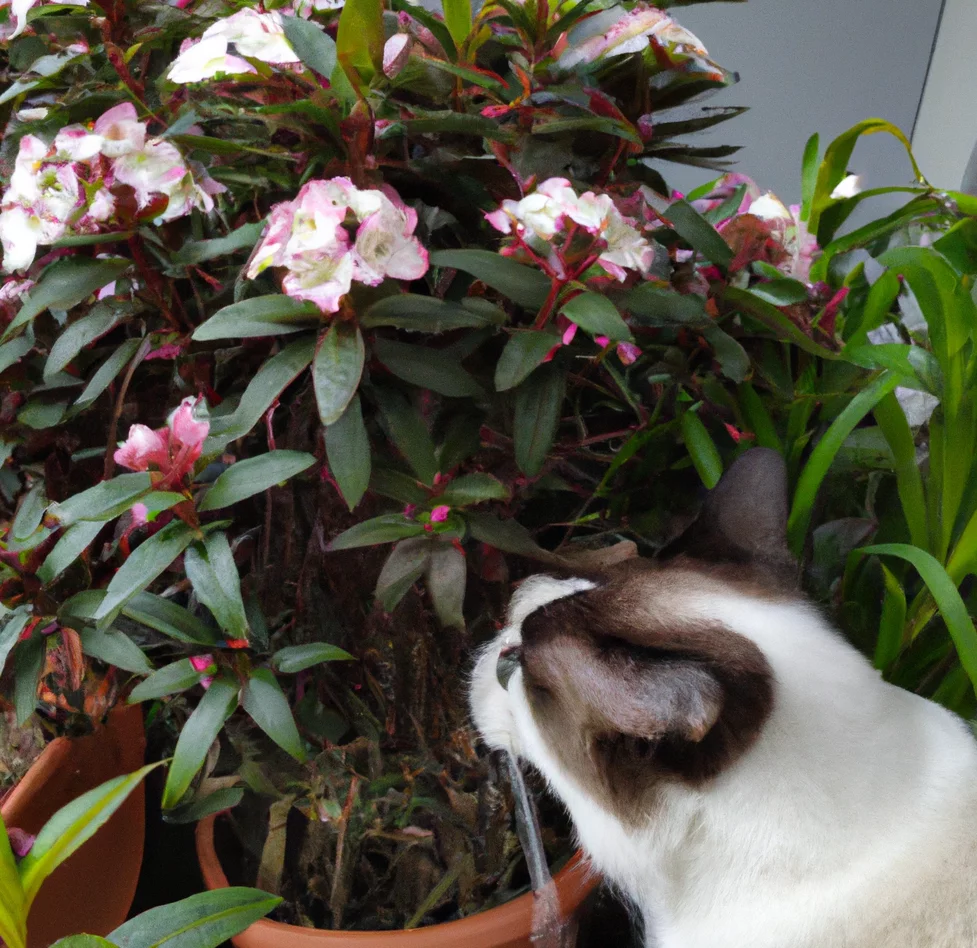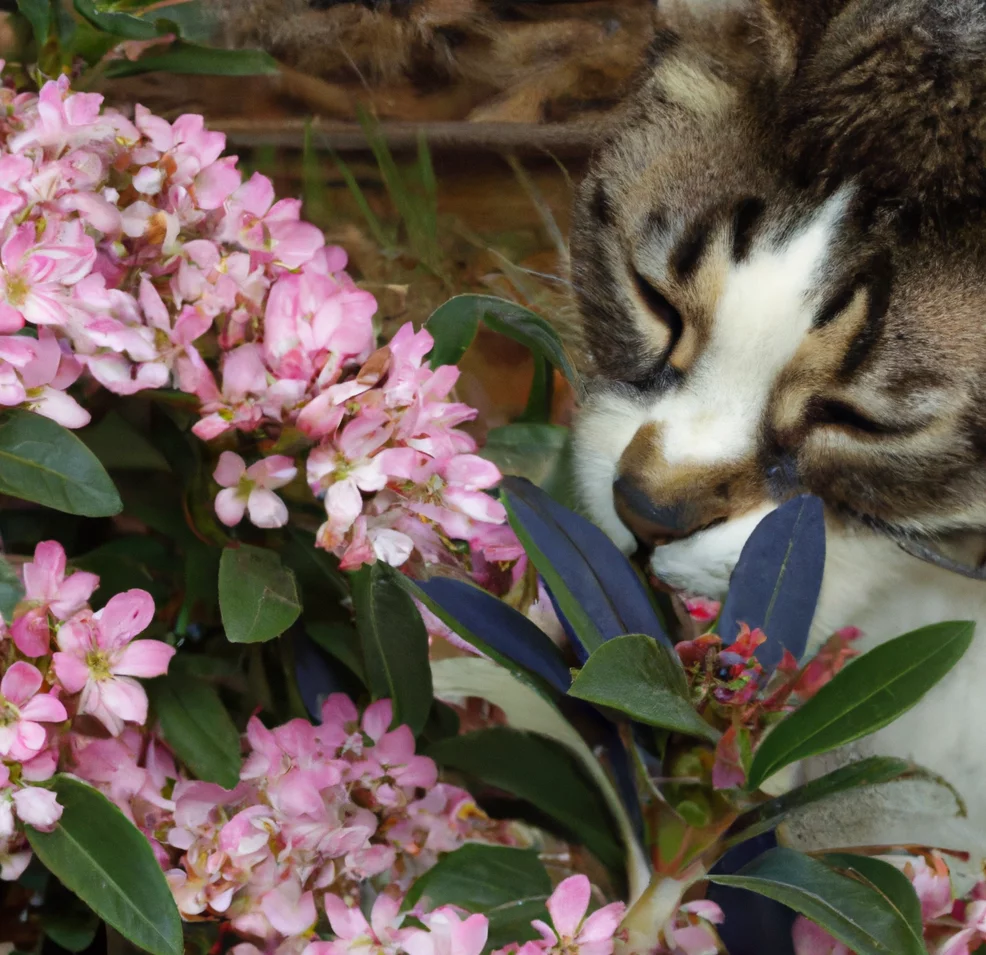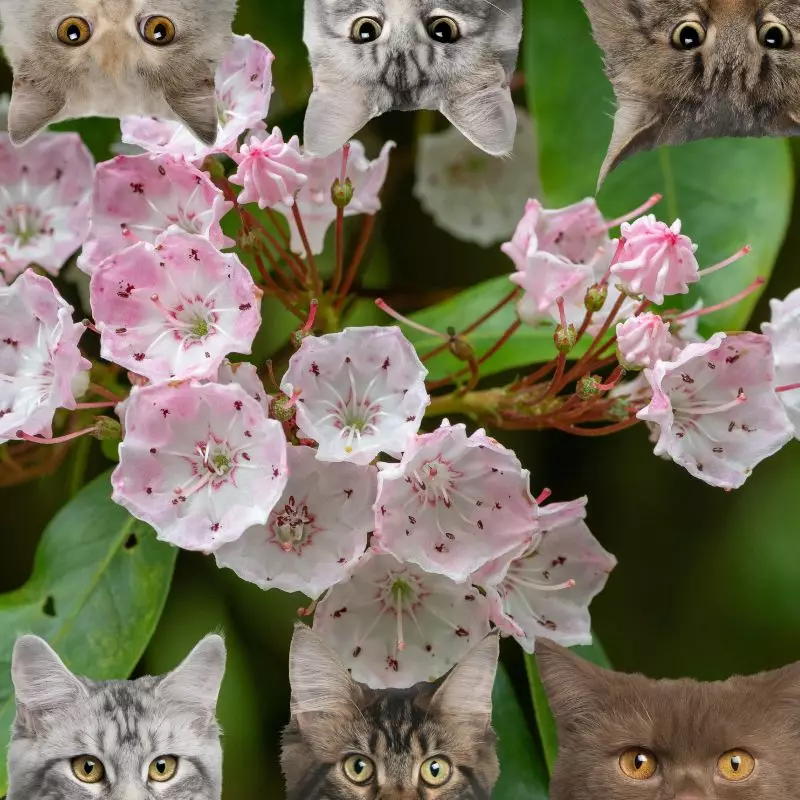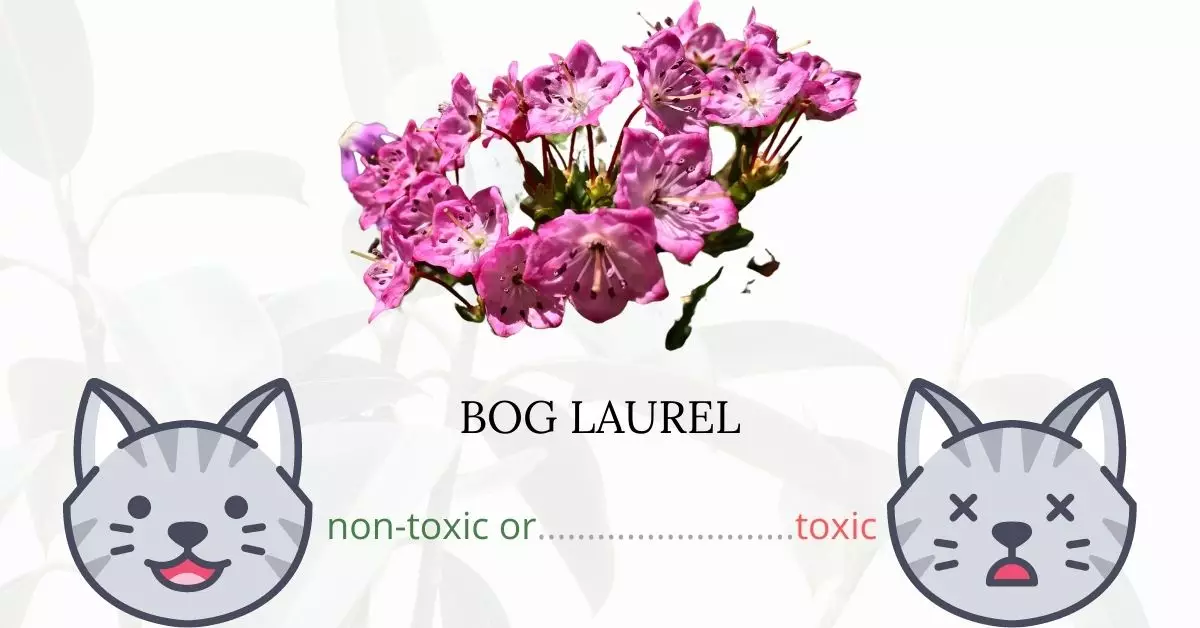Yes, Bog Laurel, also known as Pale Laurel and Bog Kalmia, is toxic to cats. This perennial evergreen shrub contains grayanotoxins that can harm felines. If ingested, these toxins interfere with cells’ natural electrical current, causing symptoms such as vomiting, diarrhea, weakness, and potentially cardiac failure. Should your cat come into contact with or ingest parts of a Bog Laurel plant, seeking immediate veterinary care is crucial.
This article is a culmination of collective insights and expertise, having been written in collaboration with a team of experienced DVMs (doctors of veterinary medicine). Their invaluable contributions ensure we provide accurate and up-to-date information on the potential risks of various plants, focusing here on Bog Laurel. Additionally, in our endeavor to offer reliable advice, we have referenced high-authority websites such as ASPCA and PetMD to further substantiate our findings.
Clinical Signs of Bog Laurel Poisoning in Cats

The Bog Laurel plant contains grayanotoxins, which are present in every part of the shrub. If cats ingest, come into contact with, or even just smell parts of this plant, they may exhibit a series of clinical signs due to the effects of these toxins. Here’s a detailed breakdown:
- Vomiting: The ingestion of grayanotoxins can irritate the stomach lining, leading the cat to vomit as a reaction to the toxin.
- Diarrhea: Similarly, the toxins can disturb the cat’s digestive system, resulting in diarrhea as the body tries to expel the harmful substance.
- Hypersalivation: Grayanotoxins can cause irritation in the cat’s mouth, leading to an excessive production of saliva, or hypersalivation.
- Low blood pressure: The toxins can affect the cat’s cardiovascular system, leading to a drop in blood pressure, which can be life-threatening if not addressed.
- Breathing problems: Grayanotoxins may affect the cat’s respiratory system, leading to difficulty in breathing or rapid, shallow breaths.
- Weakness: As the body tries to combat the effects of the toxin, the cat might exhibit signs of weakness or lethargy, showing a decreased interest in movement or play.
- Fatigue: Over time, the accumulation of toxins can exhaust the cat’s system, leading to overt fatigue and sluggishness.
- Coma: In severe cases, if the cat has ingested a substantial amount or if there’s a prolonged exposure to the toxin, it can depress the central nervous system to the point of inducing a coma.
It’s crucial for cat owners to recognize these signs early and consult a veterinarian immediately for proper diagnosis and treatment.
First Aid and Treatment of Bog Laurel Poisoning in Cats

In most circumstances, your veterinarian will give your cat hydrogen peroxide solution to induce vomiting and eliminate any remaining laurel plant from his stomach. When your cat’s vomiting stops, the vet can give him activated charcoal to absorb any toxins that haven’t yet made their way into his circulation. Gastric lavage, which is a procedure that washes the stomach cavity to remove any poisons that remain on the cat’s stomach lining, may also be performed.
The vet may also need to give your cat sodium channel blockers like quinidine or isoproterenol. If your cat is having trouble breathing as a result of the poisoning, the vet can give him respiratory support until his condition improves.
Recovery from Bog Laurel Poisoning in Cats

Laurel poisoning can be lethal if you wait too long. The sooner you get your cat to a veterinarian for medical care, the greater the chances of your cat making a full recovery.
If your cat’s condition is severe, he or she might need to stay with the vet until his condition improves. Once you get home, keep him calm and comfortable while he or she is gaining strength from the stressful experience. Keep close tabs on your cat and call the vet straight soon if you notice the symptoms are returning, particularly if your cat has another seizure.
Prevention of Bog Laurel Poisoning in Cats
If you have bog laurels growing in your yard, remove them as soon as possible to prevent your cat from another poisoning experience. Keeping your cat indoors as much as possible is the best way to minimize the risk of exposure to bog laurel or other toxic plants.
If you love plants but have cats at home, check out these lists:





